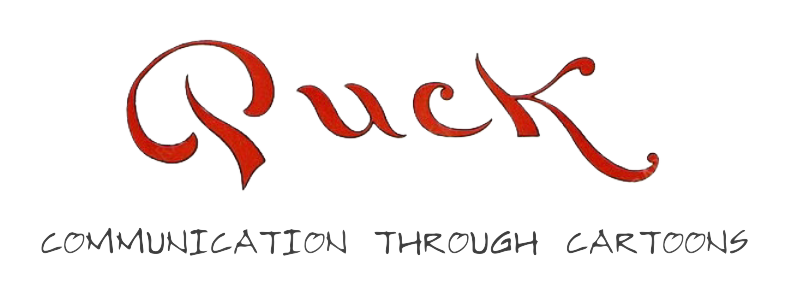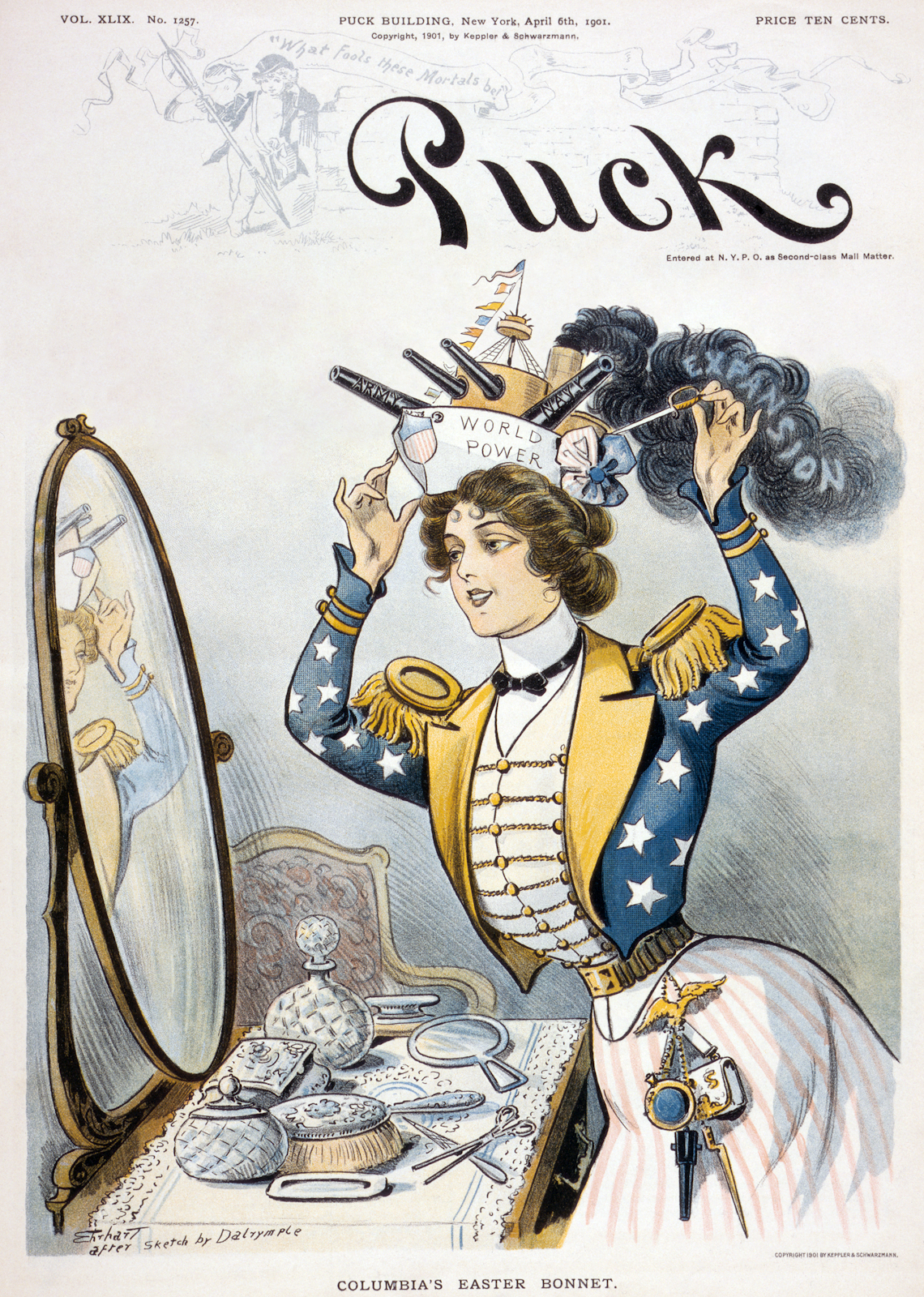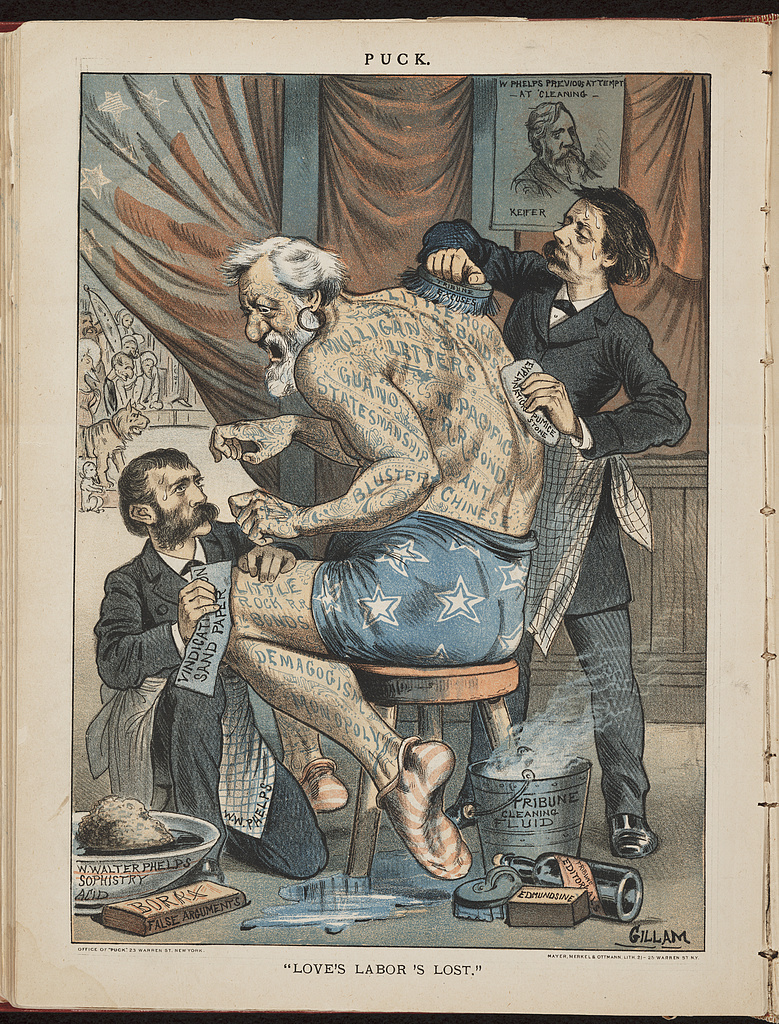

Puck magazine respected the purpose of political cartoons: to communicate opinions and commentary on politics and society. Political cartoons provide artists an opportunity to use their right to freedom of speech and press to express their opinions on many significant issues in the world using art rather than words. They are a form of communication in which politics, journalism, satire, art, and pop culture are intertwined. The drawings project powerful interpretations, expertly capturing the human nature of their subjects, and communicate persuasive, powerful, and comprehensive messages that leave impacts for decades.
"The great thing about a political cartoon is that it sums up the state of play at any moment in politics. It’s clever, funny, amusing, it informs and entertains us. It does all the things in one drawing that a newspaper does throughout all of its pages."
~RT HON GEORGE OSBORNE

Columbia's Easter Bonnet (April 6, 1901): Columbia wears a warship inscribed "World Power" [Source: Puck]

Love’s Labor’s Lost (May 7, 1884): Politicians scrubbing tattoos of scandals off of James G. Blaine [Source: Puck]
Puck magazine communicated its support and opposition for politicians and political matters throughout its publications. Arguably, Puck played a decisive role in ensuring Grover Cleveland’s victory over James Blaine in the 1884 presidential election. The magazine also opposed Theodore Roosevelt and William Taft and supported Woodrow Wilson in the 1912 election. During World War I, the magazine’s cartoons communicated the message that the United States should fully support the Allies. Puck took many controversial political stances and communicated them through its publications, convincing readers to share its views in those matters.
"If a picture says a thousand words, a cartoon says a million, and they're an absolutely crucial aspect of news and how we communicate with each other. "
~KATE ANDREWS